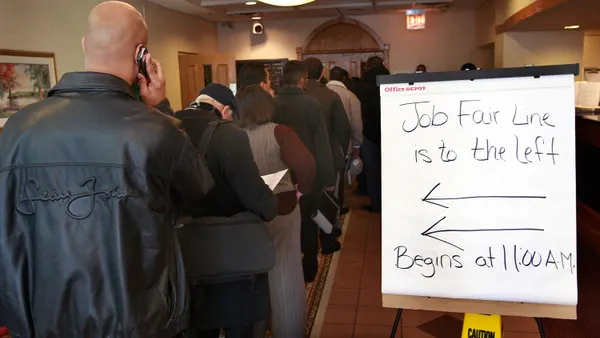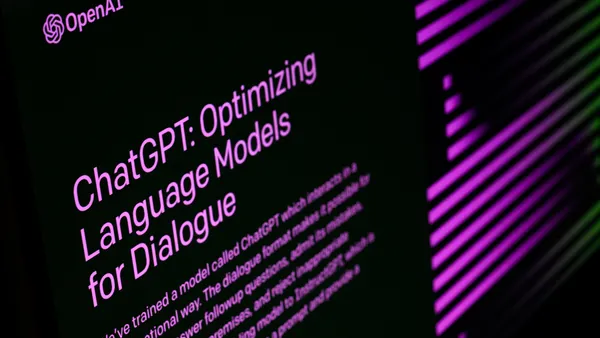Perry Oostdam is CEO and co-founder of Recruitee. Views are the author's own.
Implicit bias has taken center stage in the diversity, equity and inclusion movement, and rightly so. Research shows its presence to varying extents in every person.
Aside from reflecting poorly on an employer, the harm caused by unchecked implicit bias is broad, from lawsuits to a reduced bottom line. Good intentions don't protect hiring teams from the inevitable presence of implicit bias.
Collaborative hiring can make the difference and produce actual change.
Rather than just one or two people making the hiring decisions, collaborative hiring involves a team made up of people with different positions, backgrounds, values, and stakes in the company's success. By taking all of these ideas into consideration, a collaborative hiring team can reduce harmful hiring outcomes of implicit bias held by one person.
These benefits of collaborative hiring include:
- Hire based on complete assessment of the candidate as an individual, not "gut feelings." Asking one person to make a final decision too often results in hiring outcomes based on a "gut feeling," a scenario ripe for both implicit bias. Increasing organizational participants in the hiring process creates a more well-rounded assessment of an individual's fitness for the role and the organization, which can be as important as the right skillset. Collaborative hiring decentralizes that final decision and leverages deeper, more objective reasoning.
- A more well-rounded candidate experience. Candidates look forward to a positive hiring experience. The problem with traditional one-on-one recruitment is that it relies on a subjective cultural phenomenon and is not representative of the company as a whole. Allowing candidates to speak with numerous people in different positions and departments at your company accommodates their interest in a 360-degree view of the organization.
- A broadened spectrum of what candidates are screened for. Individuals will always value certain aspects differently than others, which can skew preference toward candidates who possess and demonstrate certain traits. Collaborative hiring drastically broadens the spectrum of attributes that a candidate is screened for, giving a more representative picture of the candidate's potential for success.
Collaborative hiring can powerfully address implicit bias in the hiring process, but it isn't enough on it's own. It's crucial to look at the process as a whole, from sourcing to interviewing to recruiters training.
We've identified five steps to a more collaborative and diverse hiring process:
Make hiring teams aware of implicit bias
Before implementing changes, it's important to communicate to key stakeholders the potential for harm to the hiring process through unchecked implicit bias, framing the conversation as an effort to drive deeper diversity of ideas and innovation at the organization. Workshops and discussion groups can be a great way to help your management team understand the issue and identify their own susceptibility to implicit bias.
Rethink sourcing
Repeatedly relying on the same job boards for all positions increases the likelihood that inbound talent will start to look the same every time.
Review candidate profiles from the typical sourcing platforms, but look for uniformity in their backgrounds that may indicate a lack of diversity among talent pools. Track for patterns in past hiring choices and what qualities ultimately drove those decisions. If the hiring team shows a pattern of declining to hire certain individuals with shared traits, this must be noted and addressed.
Review the language used in job descriptions and ads
Do job descriptions and recruitment ads contain language that subtly appeals to specific demographics, while pushing others away?
For objectivity, run job descriptions and ads through text decoder platforms for objectivity. These tools flag potentially problematic words and phrases that may indicate implicit bias towards specific demographics.
Use structured interviews
Structured interviews are a great way to improve fairness in the candidate screening process. Presenting the same questions to each candidate and using the same language against a standardized scorecard can reduce the risk of implicit bias.
Implement DEI goals
Long-term success must include measurement. Increasing diversity and reducing bias will only happen by establishing achievable goals, monitoring progress and analyzing results.
When setting DEI goals, consider:
- Where, demographically, the organization is underrepresented
- How to communicate organizational DEI goals and progress with teams
- Metrics to measure organizational DEI change
- How to hold teams and individuals accountable to organizational DEI goals
This exercise will not only help define deliverables, it will help to identify sources of implicit bias in hiring, in the first place. By using collaborative methods, and properly setting up ATS platforms to reduce the risk of biased filtering, organizations can optimize DEI in hiring processes.











